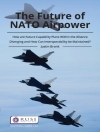What causes war? How can military conflicts best be prevented? In this book, Stephen Van Evera frames five conditions that increase the risk of interstate war: false optimism about the likely outcome of a war, a first-strike advantage, fluctuation in the relative power of states, circumstances that allow nations to parlay one conquest into another, and circumstances that make conquest easy.
According to Van Evera, all but one of these conditions—false optimism—rarely occur today, but policymakers often erroneously believe in their existence. He argues that these misperceptions are responsible for many modern wars, and explores both World Wars, the Korean War, and the 1967 Mideast War as test cases. Finally, he assesses the possibility of nuclear war by applying all five hypotheses to its potential onset. Van Evera’s book demonstrates that ideas from the Realist paradigm can offer strong explanations for international conflict and valuable prescriptions for its control.
Mục lục
1. Introduction
Questions Addressed, Why They Arise
Arguments Advanced, Answers Offered
Implications for Realism
Methods
Plan of the Book 2. False Optimism: Illusions of the Coming War
False Hope and War
Illusions of Victory
Illusions of Cheap War
To Prevent War, Promote Transparency 3. Jumping the Gun: First-Move Advantages and Crisis Instability
First-Strike, First-Mobilization, and First-Move Advantages
Hypotheses on the Effects of First-Move Advantages
Tests of Stability Theory
Causes of and Cures for First-Move Advantage 4. Power Shifts: Windows of Opportunity and Vulnerability
Types of Windows
Hypotheses on the Effects of Windows
Tests of Window Theory
Causes and Cures of Windows 5. Cumulative Resources
What Is Cumulativity?
Cumulativity and Conflict
Types of Cumulativity
Beliefs about Cumulativity and Their Implications
The Future of Cumulativity 6. Offense, Defense, and the Security Dilemma
Hypotheses on the Effects of Offense Dominance
Qualifications: When Offensive Doctrines and Capabilities Cause Peace
Causes of Offense and Defense Dominance
Predictions and Tests of Offense-Defense Theory
How Much History Can Offense-Defense Theory Explain?
Offense-Defense Theory in Perspective 7. Offense-Defense Theory and the Outbreak of World War I
The Rise of the Cult of the Offensive, 1890–1914
Predictions of Offense-Defense Theory about Europe, 1890–1914
Evidence on Offense-Defense Theory, 1890–1914
Offense-Defense Theory and the Test of 1914
Explaining World War I 8. The Nuclear Revolution and the Causes of War
MAD among Deterrable States
MAD among Nondeterrable States; MAD among Many States
Alternatives to MAD: MARNE, BAD, WORSE, and USA
The Janus-Faced Revolution ConclusionAppendix: Hypotheses on Power and the Causes of WarIndex
Giới thiệu về tác giả
Stephen Van Evera is Professor of Political Science at the Massachusetts Institute of Technology and Associate Director of the MIT Center for International Studies. His other works include Guide to Methods for Students of Political Science, also from Cornell.












